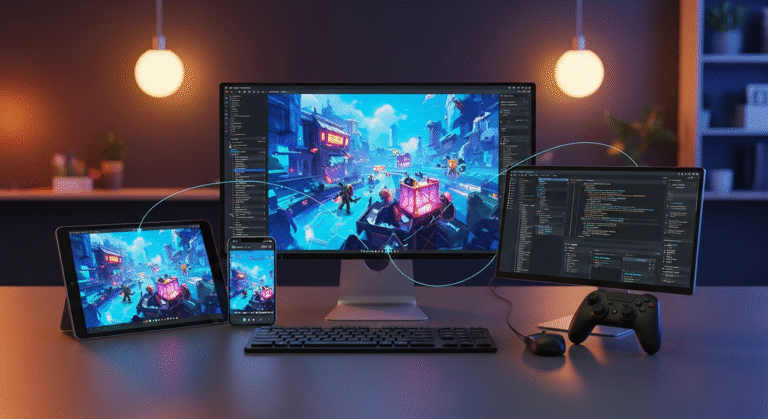A game director oversees the entire game development process, ensuring the project’s vision, scope, and schedule are met; while a creative director focuses specifically on the artistic and creative aspects of the game. At the heart of every iconic gaming experience lies a delicate synergy between two vital forces – the game director’s pragmatic leadership and the creative director’s boundless imagination.
Both roles are crucial in game art services, but what truly separates these roles? And how do they harmonize to breathe life into the interactive adventures we cherish? Let’s delve into their distinct duties and collective choreography.


Need Game Art Services?
Visit our Game Art Service page to see how we can help bring your ideas to life!
The Game Director: The Maestro Conducting the Symphony
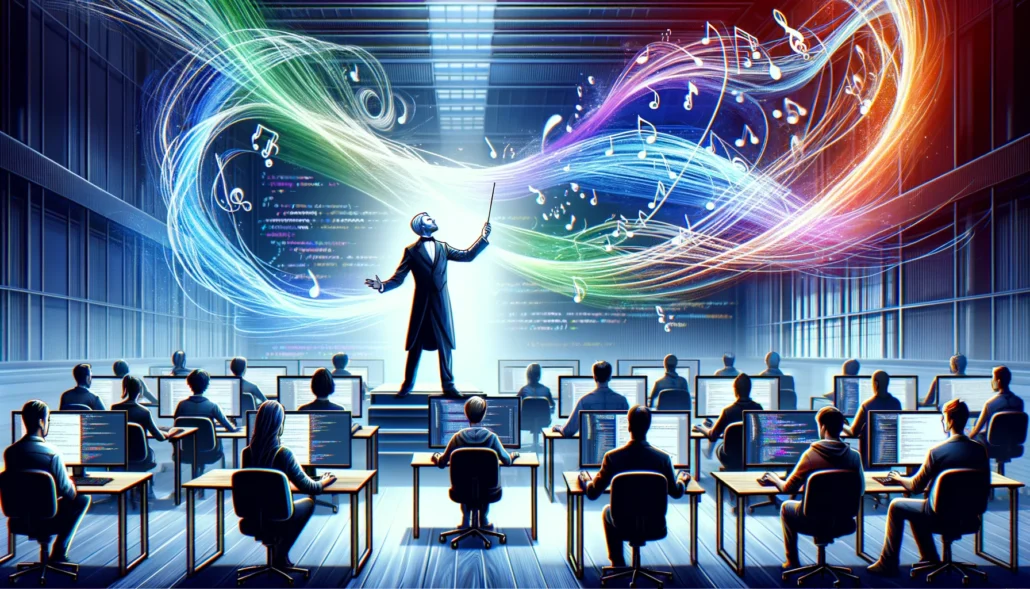
Think of the game director as the maestro taking center stage, baton in hand, conducting an entire orchestra of disciplines into one cohesive performance. Their multifaceted responsibilities are what ensure individual creative talents blend into an engaging, optimized gaming experience. Here, we provide a brief touchdown of the game director’s job as a point of reference to compare with the creative director’s job, but if you’re interested in finding out more about this role, we have a whole post dedicated to exploring the various nuances of a game director’s responsibilities.
A Visionary's Interpreter
While the creative director dreams up the conceptual universe, the game director translates those grand visions into tangible, compelling gameplay experiences. Through meticulous collaboration with writers, artists and designers, they ensure mechanics, narratives, and artistic elements coalesce flawlessly. In a particular RPG project, I vividly recall one project teetering on the brink due to a disjointed creative direction. By facilitating intensive brainstorming sessions with our concept artists and design leads, we gradually honed an intriguing alchemy where storylines organically drove player progression through a beautifully rendered world. Aligning those passionate, creative voices behind one cohesive product vision is often a game director’s greatest challenge.
The Glue that Holds the Team
Just as composers rely on the maestro to harmonize an orchestra’s performance, game directors are the binding force ensuring development teams stay in lockstep execution. Their domains span resource allocation, timeline management, open communication channels and much more. Think back to games you’ve played that felt like meticulously assembled clockwork – chances are a skilled director was the disciplined conductor behind those well-oiled scenes.
The Keystone of Final Accountability
When the fan bases roar its criticisms or sings its praises, all eyes instinctively turn toward the director as the supreme leader absorbing responsibility. They are entrusted with all big-bet decisions, separating them from even powerful co-collaborators like creative directors. Have you ever felt personally impacted by a game’s narrative direction, pleased or disappointed? You were experiencing the director’s grand vision for better or worse.
Balancing Vision and Viability
Its only right and pragmatic for the person who holds the final vision for the game to be the same as the person who makes the budget calls. Throughout the complex process of game development, there will be many times when the creative ambitions of the team are at odds with the very real constraints in reality, mainly with budget and time. Here is where the game director saves the day by prioritizing places where spending money and resources yields the best result. They do this by projecting the resource costs of any decision and weighing it against the impact it will have on the overall quality of the game at the end. This is one of the game director’s hardest jobs, as it means making hard but crucial decisions, and some of those will be unpleasant for the development team and must be handled with care and sensitivity.
Game Director Case Study: Hideo Kojima
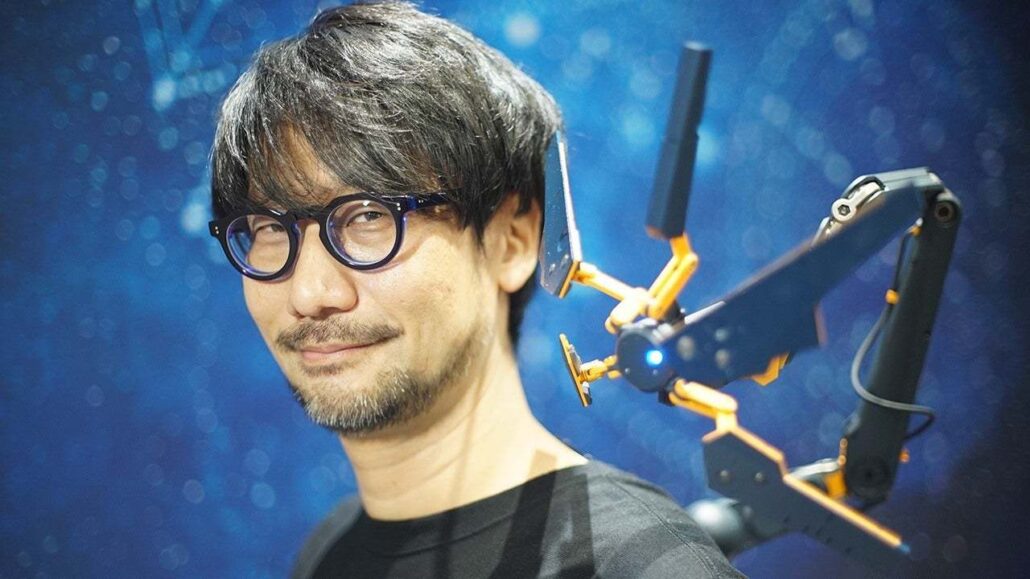
Hideo Kojima exemplifies the consummate game director’s steadfast commitment to their creative convictions. He leads Konami’s Metal Gear series, evolving it from scrappy stealth titles into a deeply layered cyberpunk sensory experience. Kojima weathered heavy pushback over the franchise’s idiosyncratic tonal shifts and protracted production sagas. However, his unflinching artistic tenacity forged not just extremely popular titles but an entirely new subgenre synthesizing stealth mechanics with dense Cold War overtures. His stubborn directorial navigation split fandom polarities yet cemented Metal Gear’s lasting legacy as a maverick landmark. For such is the audacious vision-protection innate to the game director’s sacred charge.
The Creative Director: The Artistic Lightning Rod
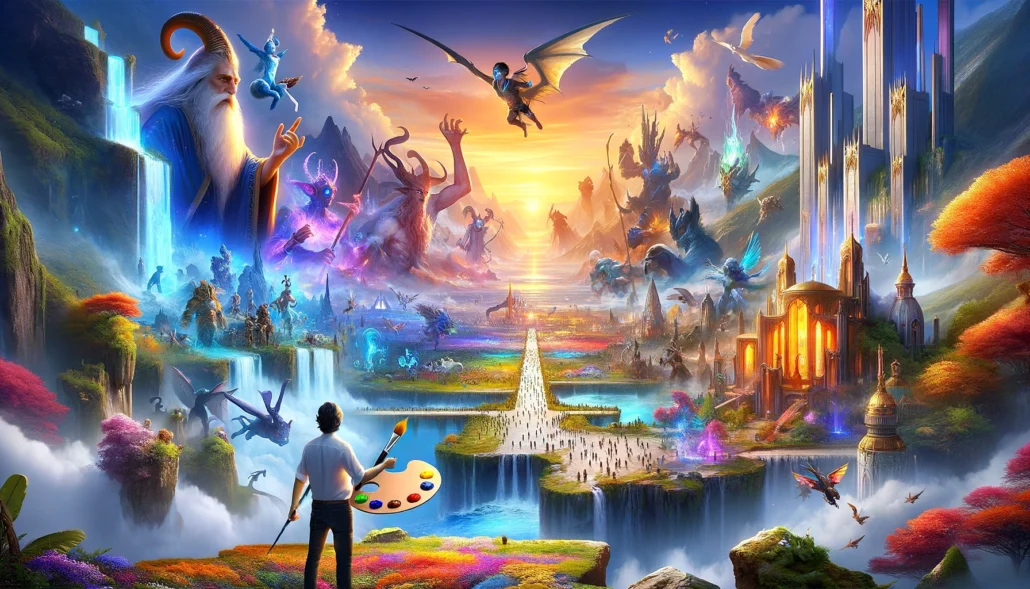
While directors preside over execution details, creative directors are the ethereal bards breathing soul and identity into experiences. These charismatic visionaries channel intangible elements into emotionally transcendent journeys.
The World-Crafting Wizards
From iconic protagonists to awe-inspiring vistas, creative directors are world crafters adept at materializing whole universes in vibrant detail. Their unique talents inject spirit and authenticity into the pixels dancing across our screens. Ask yourself what games have truly stuck with you long after completion – chances are a creative director’s beautifully imagined world left an indelible imprint.
The Emotional Architects
Why do we, as players, keep returning to certain gaming worlds? More often than not, it’s the emotive storytelling that reels us in. While writers craft surface narratives, creative directors shape the subtler emotional currents and thematic undertones into profound resonating experiences. Think of your favorite narratively rich adventures – wasn’t there a singular cohesive emotional throughline that elevated it from idle entertainment to something deeply memorable?
The North Star for Creative Integrity
Any composed production risks derailment without a steadfast creative authority figure upholding the original artistic principles. Creative directors encircle teams with a prescriptive ambient aura, aligning all creative energies behind one unified artistic truth. When you detect the unwavering singularity of creative voice in legendary games, you’re experiencing the toil and conviction of an exceptional creative lead.
Creative Director Case Study: Jenova Chen

Jenova Chen’s Odyssey Birthing Journey epitomizes the creative director’s supreme role as a spiritual resonance shepherd. The vagabond fantasy began life as a deeply personal indie project exploring Chen’s own weltanschauung. However, the fledgling concept risked becoming distorted once substantial resources were secured for full-scale production.
Through sheer visionary mastery, Chen’s creative compass maintained unflappable alignment throughout the multi-year gauntlet. Every texture, character nuance, audio cue – even the abstract narrative’s obfuscating mystery -uncompromisingly upheld Journey’s cohesive aura of wistful human mindfulness. While polarizing to some, the experience nevertheless achieved widespread mainstream veneration precisely because Chen’s creative iron grip forged an indelible interactive poem of vulnerability. Such fortified curatorial stewardship epitomizes creative direction’s penultimate charge.
Game Director vs Creative Director: What’s the Difference?
While both positions are integral to game development, they have different focuses and levels of responsibility. The game director is the project head overall, responsible for the team, schedules, and executive choices. They’re super focused on schedules, budget, and the overall vision of the game so that all the different elements are going in the same direction.
At the same time, the creative director has the artistic and emotional aspect of the game. They are responsible for the world building, the narrative, the visual direction, and mood. Their responsibility is to ensure that the creative vision of the game makes sense so that it can connect with gamers on an emotional level. Whereas the game director poses the question, “Is this working as a whole?”, the creative director poses the question, “Does this feel right?”
Both roles become entwined during the decisions and meetings but serve various roles. The game director ensures the ship can travel smoothly; the creative director ensures the journey is enjoyable.
Skills Needed for Game Directors vs. Creative Directors
These are some of the essential skills for each role:
Game Director Skills
- Project management
- Cross-functional communication
- Budget forecasting
- Risk assessment
- Systems thinking
Creative Director Skills
- Artistic vision
- Narrative development
- Empathy and emotional intelligence
- Cross-disciplinary creativity
- A strong aesthetic sense
How to Become a Game or Creative Director
Being a game director or creative director is a career goal that requires experience, leadership, and extensive game development knowledge. These roles are not entry-level positions—you don’t just wake up and achieve them overnight. Instead, they are a result of years of doing hands-on work, creative problem-solving, and having the ability to lead complex teams to a unified goal. While the paths to each are different, both demand a combination of technical skill and good people skills. If you want to work your way up to one of the most influential jobs in the business, whether you have an interest in production planning or narrative art, this is the way to do it.
How to Become a Game Director
Most game directors started out not as the person calling the shots. They generally start out as a game designer, producer, or a lead on the technical side. They learn over time how everything coheres together—gameplay systems and team processes, timelines, and budgets. They become trusted enough eventually to step in as a game director.
To go in this direction, you’ll need to get used to leading teams and making big decisions. That means knowing a little about everything: design, art, audio, engineering—you don’t have to know it all, but you must know how it all goes together. It’s also great to be grounded under pressure, because when something does fail (and it will), people will be coming to you to get it fixed.
Project management or game design degrees can give you a head start, but come on! It’s the experience in the real world that truly counts. If you’re the type who instinctively steps up to the challenge when things get crazy and enjoys imposing order on creative chaos, then this might be the path for you.
How to Become a Creative Director
Creative directors usually end up being the ones who set an emotional tone and visual style for a game. They’re the ones saying, “What do we want the player to feel here?” and working with artists, writers, and designers to make that feeling happen. A lot of them start out in the hands-on positions—maybe as a concept artist, narrative designer, or level designer—before moving into a directorial position.
To get on this path, you’ll have to have a strong creative voice and prove you can stay on a vision without losing flexibility. Creative directors need to reach out to many different departments and lead others through feedback instead of dictating. It’s not necessarily being the most “artistic” person in the room but rather the one who keeps everyone on the same page creatively.
The value is in a solid portfolio—a portfolio that shows originality and consistency project to project. Whether you learned by art, by storytelling, or simply by building up experience doing personal projects or solo games, the key is that you can tell a story, evoke a mood, and get people to feel something through play.
Famous Game and Creative Director Collaborations
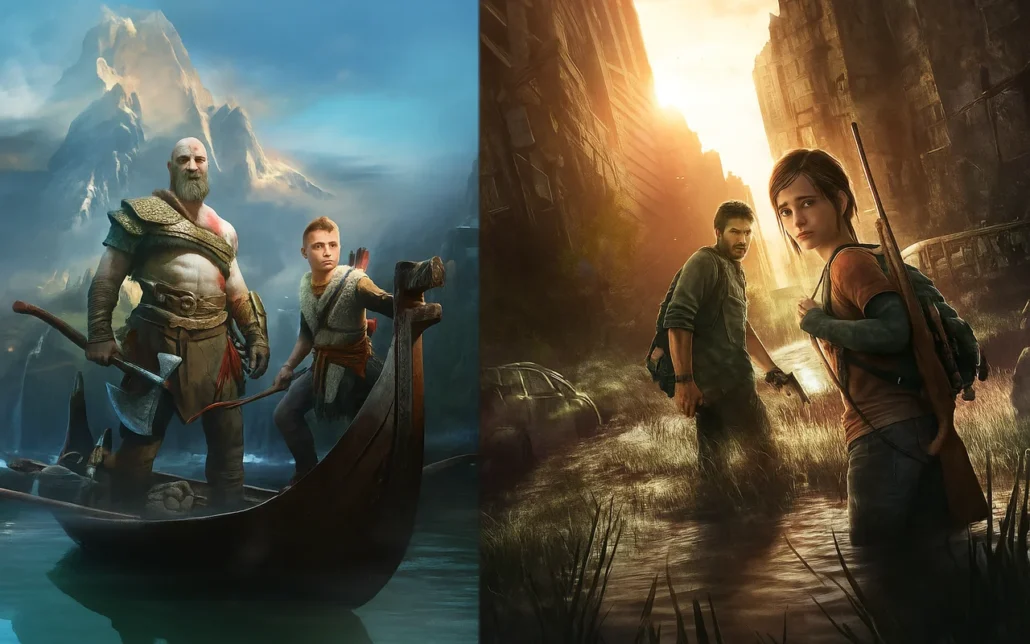
A few of our greatest games of all time weren’t conceived out of genius ideas—sometimes they were conceived out of genius collaborations. When a game director and creative director click on a plane flying high above the rest, something magical occurs. It’s not about fancy-schmancy gameplay or jaw-dropping graphics—it’s about a shared vision so masterfully realized that you can feel it in every element.
The Last of Us is the case in point. Neil Druckmann and Bruce Straley joined together under the Naughty Dog flag—Druckmann with the artistic vision, Straley with the game direction in general. Druckmann was determined on emotional storytelling, creating complex, dynamic characters and a world that was real. Straley kept the project moving forward, balancing scope, timelines, and gameplay flow. That’s the golden mean of structure and soul.
The other glaring example is God of War (2018), led by Cory Barlog. Although Barlog was a creative director, he was also a game director, to show that if one can meet in the middle, the result can be nothing short of phenomenal. But behind the scenes, there was still the whole leadership team behind his vision, every single one of whom made sure that the emotional depth of Kratos’ story was matched with gameplay that was smooth and potent. This collaboration proves that the emotional weight and mechanical sheen were no accidents—that they were the result of painstakingly collaborative work.
These partnerships work because there is respect. The creative director is not throwing out wacky ideas without being concerned with how they’re going to be built, and the game director is not compromising quality for deadlines. They’re listening to each other. They’re fighting for what matters and releasing what doesn’t. And that is how a game stops being a commodity. It becomes something legendary.
So the next time you conquer a game and you think it went differently, you can be sure it’s because there were two people—both with vision, and one with strategy—behind the scenes pulling the strings in sync hand-in-hand.
Why Understanding These Roles Matters for Game Dev Teams
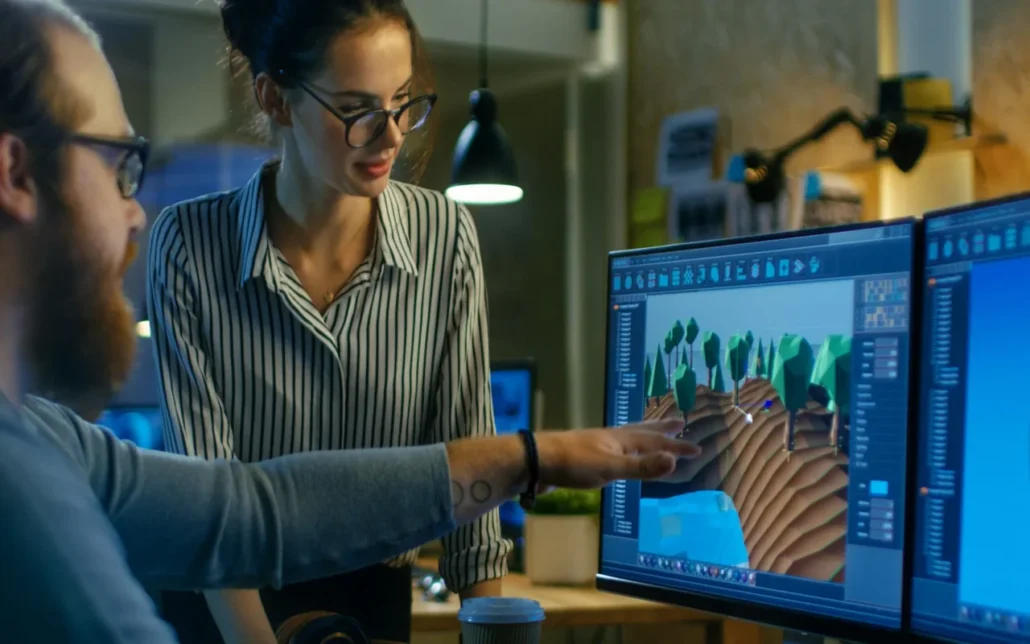
With any art project—and specifically something as involved as a video game—it’s not only beneficial to know who’s doing what, it’s necessary. Game teams work more efficiently when everyone knows exactly what the game directors are doing, compared to what the creative director is doing. People know who to turn to for certain decisions, who’s setting the tone creatively, and who’s steering the overall ship.
When that clarity is not present, it gets ugly. You can find yourself getting a bunch of different people giving you different feedback that contradicts one another, or areas of the game that feel disjointed, where the story says one thing but the gameplay says another. Or maybe the team starts spending time and energy redoing work that could have been avoided by better guidance. These are not trivial annoyances—they can slow down a game badly or even sink a project outright.
But when every job is well-respected and well-defined, magic is happening. The game director makes sure that that vision happens inside the timeline, inside the budget, and within the capabilities of the team, and the creative director can focus on creating a world that the players will remember. It’s a trust and communication-based partnership. And when that synergy is successful, everybody senses it—artists, writers, programmers, all of them know what they’re doing and how what they’re doing fits into the larger scheme.
Comprehending these roles isn’t simply about giving credit where it’s needed. It’s about building a healthy development culture, where people collaborate instead of compete, and where the project benefits from strong leadership on both the practical and creative sides. Whether you’re part of an AAA studio or a small indie team, respecting the difference between these roles can mean the difference between a game that barely holds together and one that players remember for years.
Challenges Faced by the Game Director vs. Creative Director
Game direction and creative direction both have their challenges. Let’s discuss some of the challenges common in these roles.
Game Director: Juggling Dreams and Deadlines
Game direction is not an easy job and requires a strong sense of leadership. A game director must ensure that everything is on track and that the projects are prepared according to the timeline.
To do that, a good game director needs to communicate well with each team member in different departments. It’s kind of like speaking different languages with different people (think art, code, design, marketing).
A good game director should also consider the team members as actual human beings and not working machines to avoid burnout among the team members. Game directors are under a lot of pressure. If anything goes wrong ( bugs, crashouts, bad reviews, and delays), the game director is the one who needs to manage the situation.
Another major challenge is scope creep. A good director needs to be able to say no if it’s needed. There is a high chance that someone with this position gets bombarded with new ideas that lead the project towards a whole new path, and in this case, the director should respectfully deny the proposition.
Creative Director: Keeping the Soul Intact
Creative directors deal with more internal struggles. They are the creative force of the team and their biggest challenge might be to stay consistent on the creative vision while the external situation keeps shifting. The budget might be cut down, and the entire gameplay mechanic might be dropped. Despite all these changes, the creative director must compromise and adapt the ideas to the available resources.
Creative directors are constantly pulled between creativity and implementation. They should keep the ideas practical, and despite their untamed imagination, they must keep their ideas practical.
Creative block is another challenge creative directors can face. Anyone involved in the creative industry knows that you can not force creativity. When an artist hits a creative block, they can easily lose their motivation and confidence. Even if they are dealing with burnout, they must keep the spark alive for everyone else and keep moving forward.
A Choreographed Interplay of Orchestration and Inspiration
Clearly game directors and creative directors each command distinct crafts that must harmonize for gaming magic to crystallize. One upholds the structural realities of audience-facing execution, while the other renders the atmospheric intangible essence beneath the entertainment exterior. The greatest development triumphs are borne of this delicate interplay between pragmatic orchestrators and maverick creatives. One cannot exist without the other in perfect counterbalanced choreography.
As you journey through masterfully designed gaming worlds exhibiting that rare structural cohesion elevated by indelible inspirations of genius, remember the vital symbiosis that birthed such wonders. For it is only when the disciplined maestro’s baton meets the eccentric artist’s unbridled muse that the stage transcends into something extraordinary. The methodical embracing of the inspired brought forth wondrous mainstream resonance. This is the cosmic interplay that elevates games from entertainment novelties into artistic resonances, changing lives through the majesty of interactive experience!
